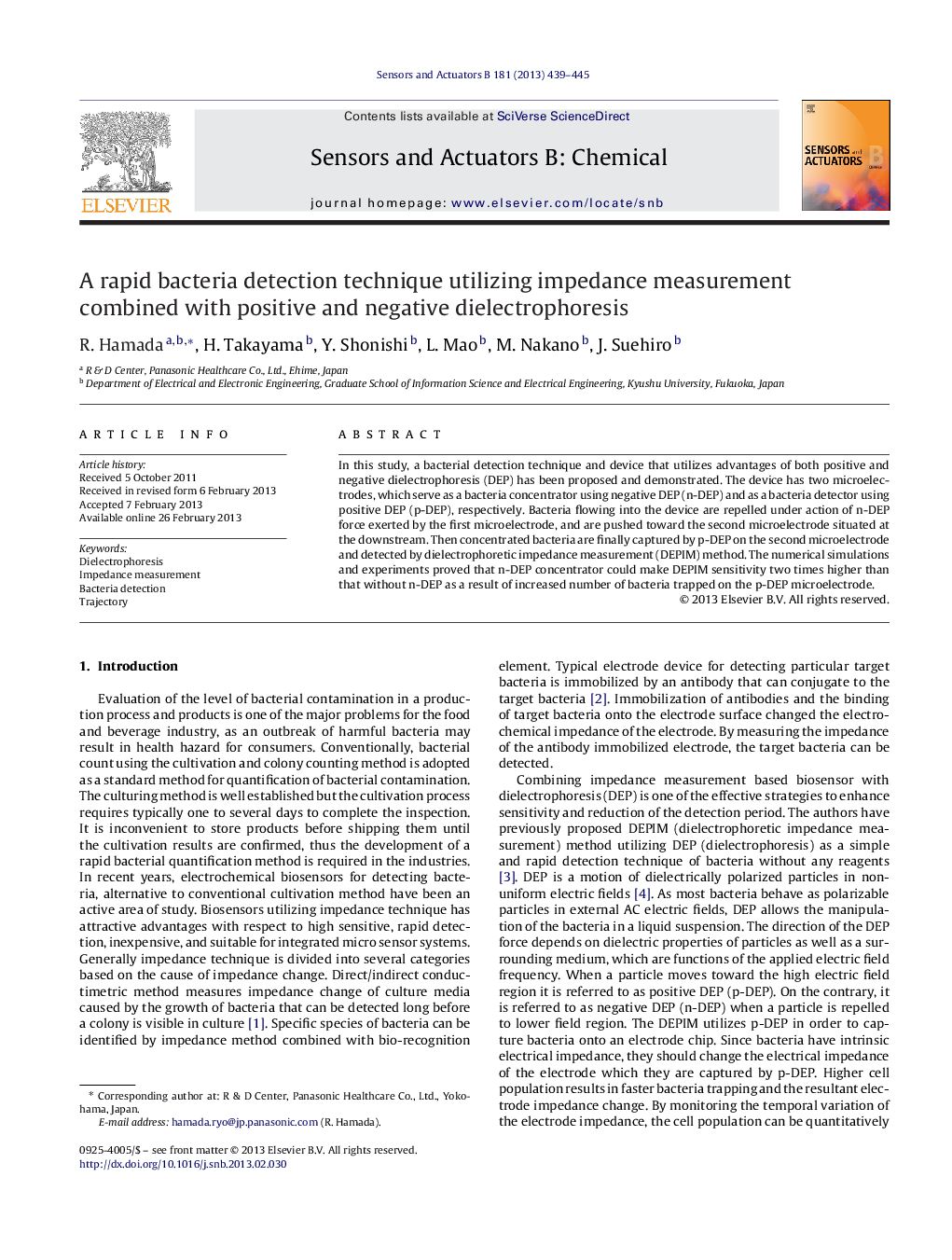| Article ID | Journal | Published Year | Pages | File Type |
|---|---|---|---|---|
| 742165 | Sensors and Actuators B: Chemical | 2013 | 7 Pages |
In this study, a bacterial detection technique and device that utilizes advantages of both positive and negative dielectrophoresis (DEP) has been proposed and demonstrated. The device has two microelectrodes, which serve as a bacteria concentrator using negative DEP (n-DEP) and as a bacteria detector using positive DEP (p-DEP), respectively. Bacteria flowing into the device are repelled under action of n-DEP force exerted by the first microelectrode, and are pushed toward the second microelectrode situated at the downstream. Then concentrated bacteria are finally captured by p-DEP on the second microelectrode and detected by dielectrophoretic impedance measurement (DEPIM) method. The numerical simulations and experiments proved that n-DEP concentrator could make DEPIM sensitivity two times higher than that without n-DEP as a result of increased number of bacteria trapped on the p-DEP microelectrode.
